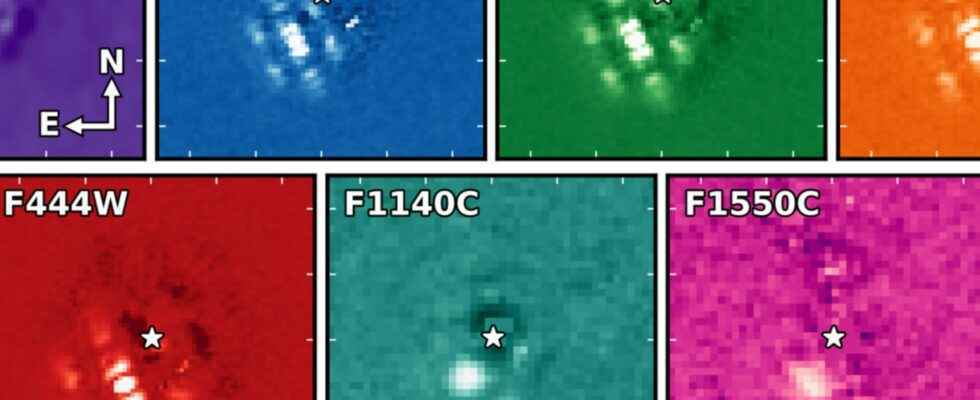Here is Hip 65426b, an exoplanet located 400 light years from Earth and even bigger than Jupiter. This is the first direct image of an exoplanet signed by the JWST.
The James Webb Space Telescope (JWST) is decidedly unstoppable. Barely a few weeks after its activation, it was already giving us a deeper picture of the cosmos than ever provided by Hubble. Then his instruments gave the first indubitable proof of the presence of CO2 in the atmosphere of an exoplanet. Not to mention the striking image of the famous Phantom Galaxy, in the infrared.
Now onto Hip 65426b. This exoplanet, even larger than Jupiter, is at the heart of a study currently in prepublication, posted online on August 31, 2022 and spotted by astrophysicist Eric Lagadec. In this work, from the JWST Early Release Science program, we find the very first direct image of an exoplanet taken by the JWST.
We speak of the first “direct” image, since James Webb has already taken several images of the cosmos where such objects are present, but in these observations, the telescope looks directly at the planet in question.
Exoplanet Hip 65426b is 400 light years away
If the image does not make you shiver with incredible sharpness, remember that this celestial object is located 400 light years from Earth. However, a single light-year already corresponds to 10,000,000,000,000 km. So, already that taking a picture of a pigeon at the other end of the street is not always an easy task, imagine a planet located 400 light years away.
And this is precisely one of the roles of the JWST: to allow scientists to better see, and thus better understand the characteristics, of these mysterious objects that are exoplanets and exoplanetary systems. In the hope, of course, of perhaps finding certain forms of biological life there, but above all of retracing cosmic history through these complex systems.
The power and precision of his instruments will allow James Webb to gradually revolutionize this study of exoplanets. In this study, Hip 65426b can be observed in 7 different colors of the infrared spectrum. Beyond the understanding of this object in particular, this work also provides scientists with “ a broader understanding of JWST as a tool for high contrast imaging “, write the authors.
And there is good news on this subject: as Eric Lagadec notes, the study shows that James Webb’s performance is about 10 times higher than expected.
